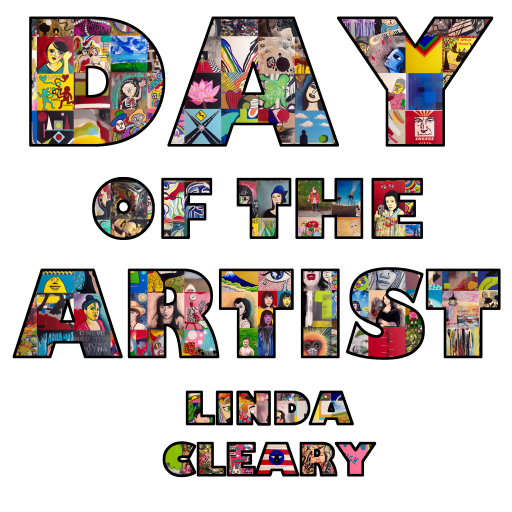It’s Day 43 and boy am I complete GRUMP today. This packing, moving, repairs, remodeling business this month is really starting to wear me down. Has nothing to do with painting, but I have to say that I am really glad that I moved artists around and not too many of them this month will melt my brain! Who knows though? I underestimated a few minimalist/abstract expressionists…it’s usually much harder than I think. Today I am celebrating the wonderful Franz Kline!


Franz Jozef Kline (May 23, 1910 – May 13, 1962) was an American painter mainly associated with

the abstract expressionist movement centered around New York in the 1940s and 1950s. He was born in Wilkes-Barre, Pennsylvania, and attended Girard College, an academy in Philadelphia for fatherless boys. He attended Boston University, and later taught at a number of institutions including Black Mountain College in North Carolina and the Pratt Institute in Brooklyn. He spent summers from 1956 to 1962 painting in Provincetown, Massachusetts, and died in New York City of a rheumatic heart disease.
He was married to Elizabeth Vincent Parsons, a British ballet dancer.

As with Jackson Pollock and other Abstract Expressionists, he was labeled an “action painter” because of his seemingly spontaneous and intense style, focusing less, or not at all, on figures or imagery, but on the actual brush strokes and use of canvas. For most of Kline’s [mature and representative] work, however, as the phrase goes, “spontaneity is practiced”. He would prepare many draft sketches—notably, commonly on refuse telephone book pages—before going to make his “spontaneous” work.

In the late 1930s and early 1940s Kline worked figuratively, painting landscapes and cityscapes in addition to commissioned portraits and murals. Kline’s best known abstract expressionist paintings, however, are in black and white.

Kline re-introduced color into his paintings around 1955, though he used color more consistently after 1959. Kline’s paintings are deceptively subtle. While generally his paintings have a dynamic, spontaneous, and dramatic impact, Kline often closely referred to his compositional drawings. Kline carefully rendered many of his most complex pictures from studies. There seem to be references to Japanese calligraphy in Kline’s black and white paintings, although he always denied that connection. Bridges, tunnels, buildings, engines, railroads, and other architectural and industrial icons are often suggested as imagery informing Kline’s work.

Kline’s most recognizable method/style derives from a suggestion made to him by his friend Willem de Kooning. In 1948, de Kooning suggested to an artistically frustrated Kline to bring in a sketch and project it with a Bell Opticon opaque projector he had at his studio. Kline described the projection as such:
- “A four by five inch black drawing of a rocking chair…loomed in gigantic black strokes which eradicated any image, the strokes expanding as entities in themselves, unrelated to any entity but that of their own existence.”
Drawing was an essential element in Kline’s process, and he would return over


and again to forms first sketched on the pages of telephone books, structures that provided the basis of his essays in black and white. He created paintings in the style of what he saw that day throughout his life. In 1950 he exhibited many works in this style at the Charles Egan Gallery. In the later 1950s such paintings as Requiem (1958) added a third type of work to his repertory, by allowing the previously clearcut monochrome divisions to merge into a more complex chiaroscuro. From 1958 he introduced strong colors into some of his works; from 1959 to 1961, Kline executed a sequence of exceptionally large works, known as the “wall paintings”.
Biography is from wikipedia.

I was excited to figure out what I was going to come up with with my piece. I decided to look at a picture for reference to paint. I also wasn’t sure if I wanted to add color or not. I decided to paint the background slightly darker (ivory) and then paint in black. I didn’t use any colors, but I did decide to add some white and gray.
I think the problem that I had was that it ended up looking too much like the actual photo and not abstract enough! I was trying my hardest to not “paint” the photo. This is all a great learning experience. I love that not every painting is perfect in my eyes. I am happy that I did it and think it turned out okay.
I didn’t really take any progress photos. I started, fell into a trance and then was finished!
Here is my final piece! I hope you enjoy it. See you tomorrow on Day 44! Best, Linda

Linda Cleary 2014
Acrylic on Canvas

Painting Number 43- Tribute to Franz Kline
Linda Cleary 2014
Acrylic on Canvas

Painting Number 43- Tribute to Franz Kline
Linda Cleary 2014
Acrylic on Canvas

Painting Number 43- Tribute to Franz Kline
Linda Cleary 2014
Acrylic on Canvas

Painting Number 43- Tribute to Franz Kline
Linda Cleary 2014
Acrylic on Canvas

Hey Linda! :]
This is one my favorites so far! Hope you’re settling into the new place nicely, we’ve been seeing the days unfold at the shop via Feedly, hehe.
Talk to you soon~
Matt, from Modern Mouse
Thanks Matt! It was fun to paint this one. 🙂 Thanks for visiting and commenting on the blog!